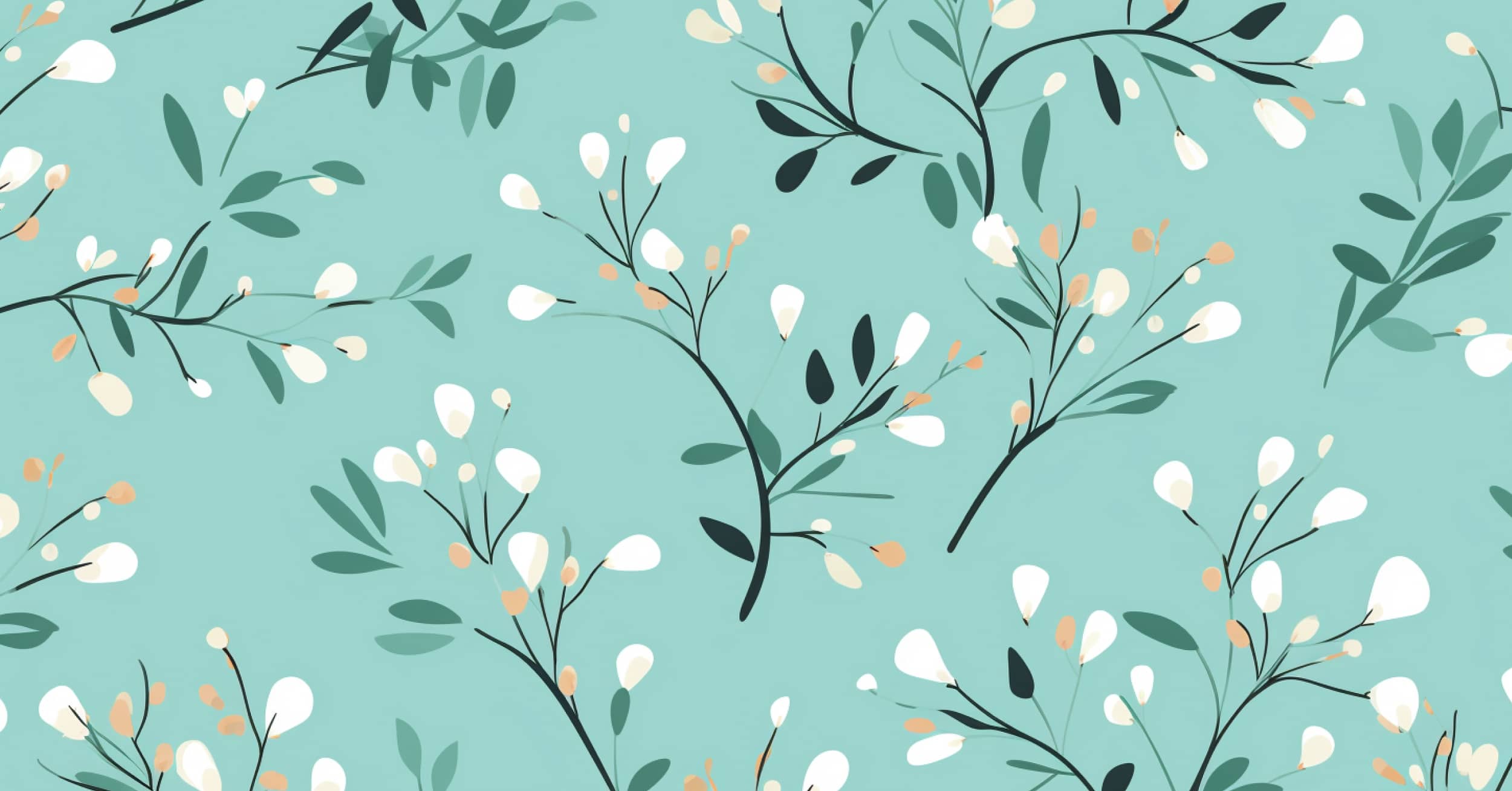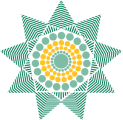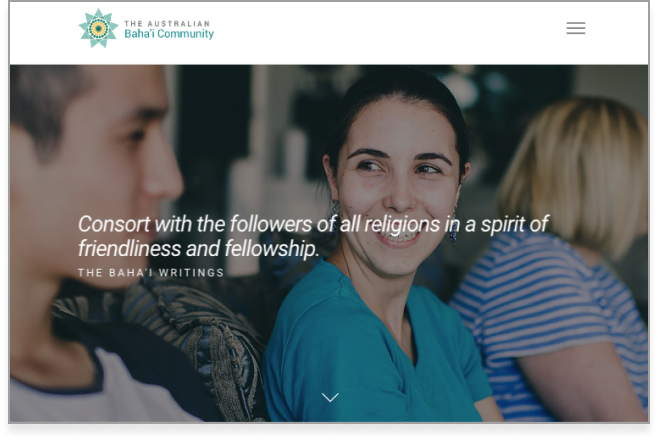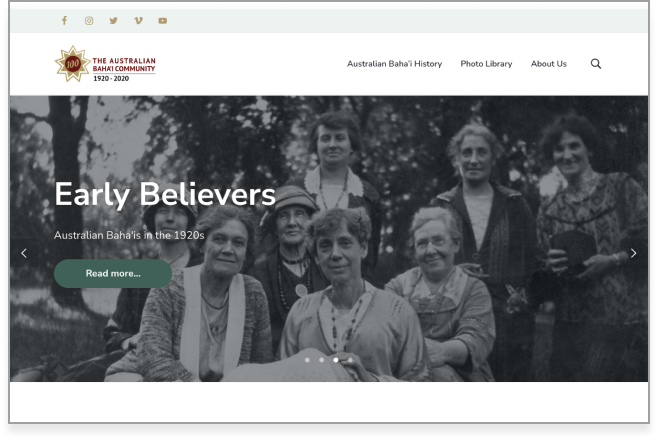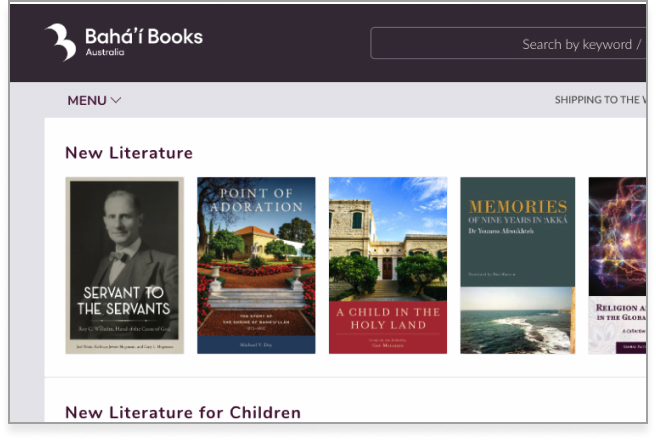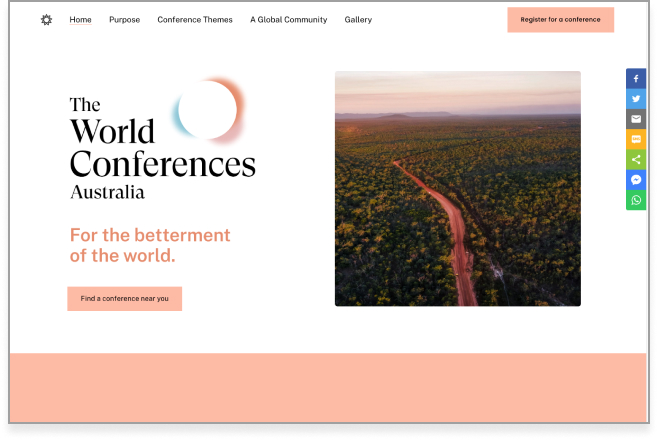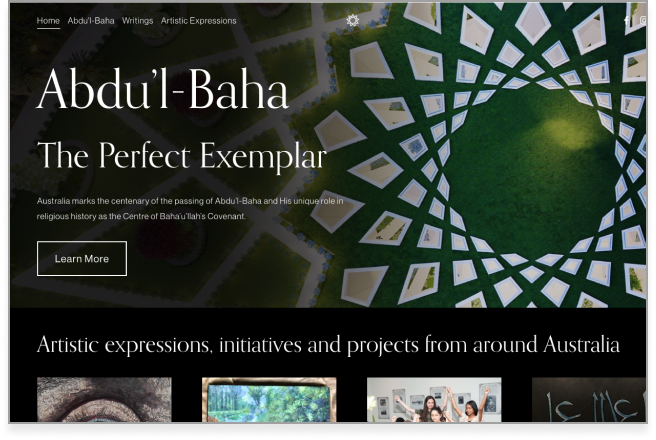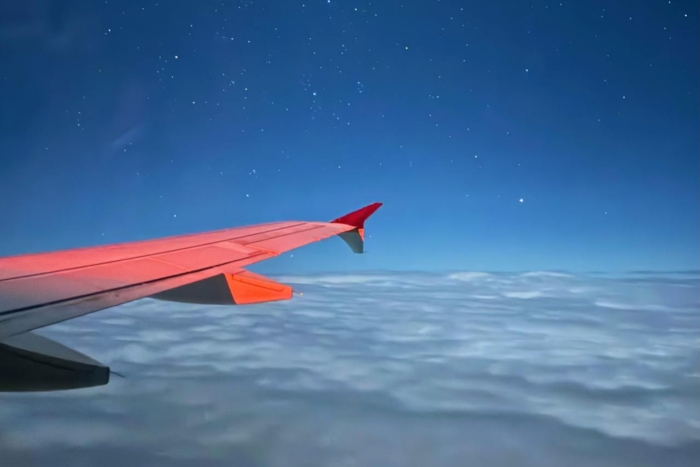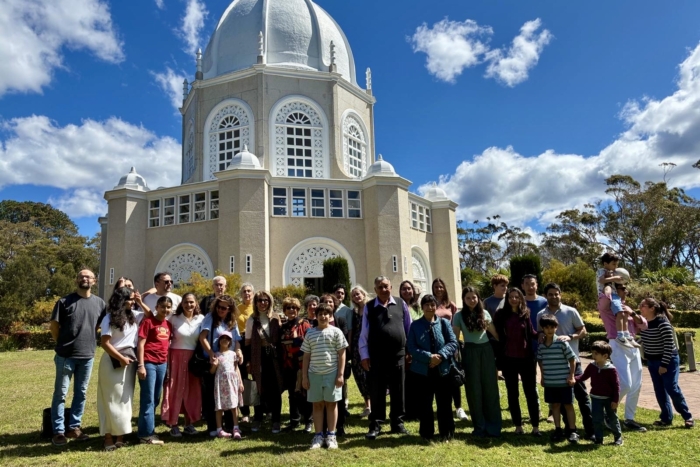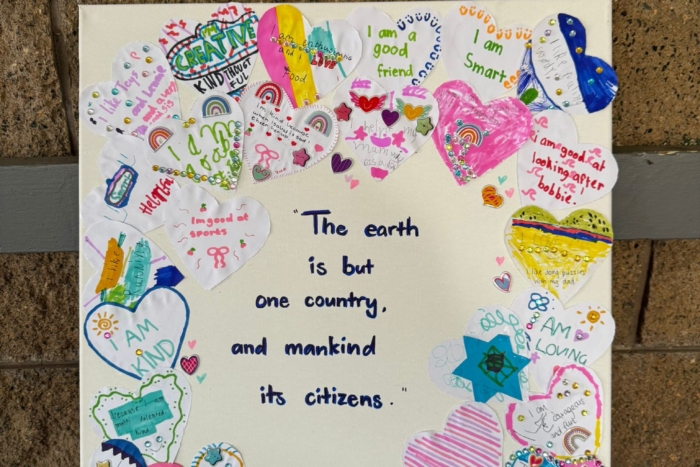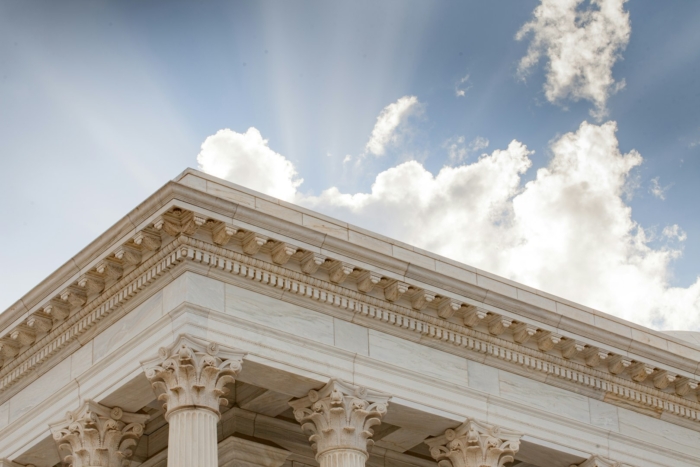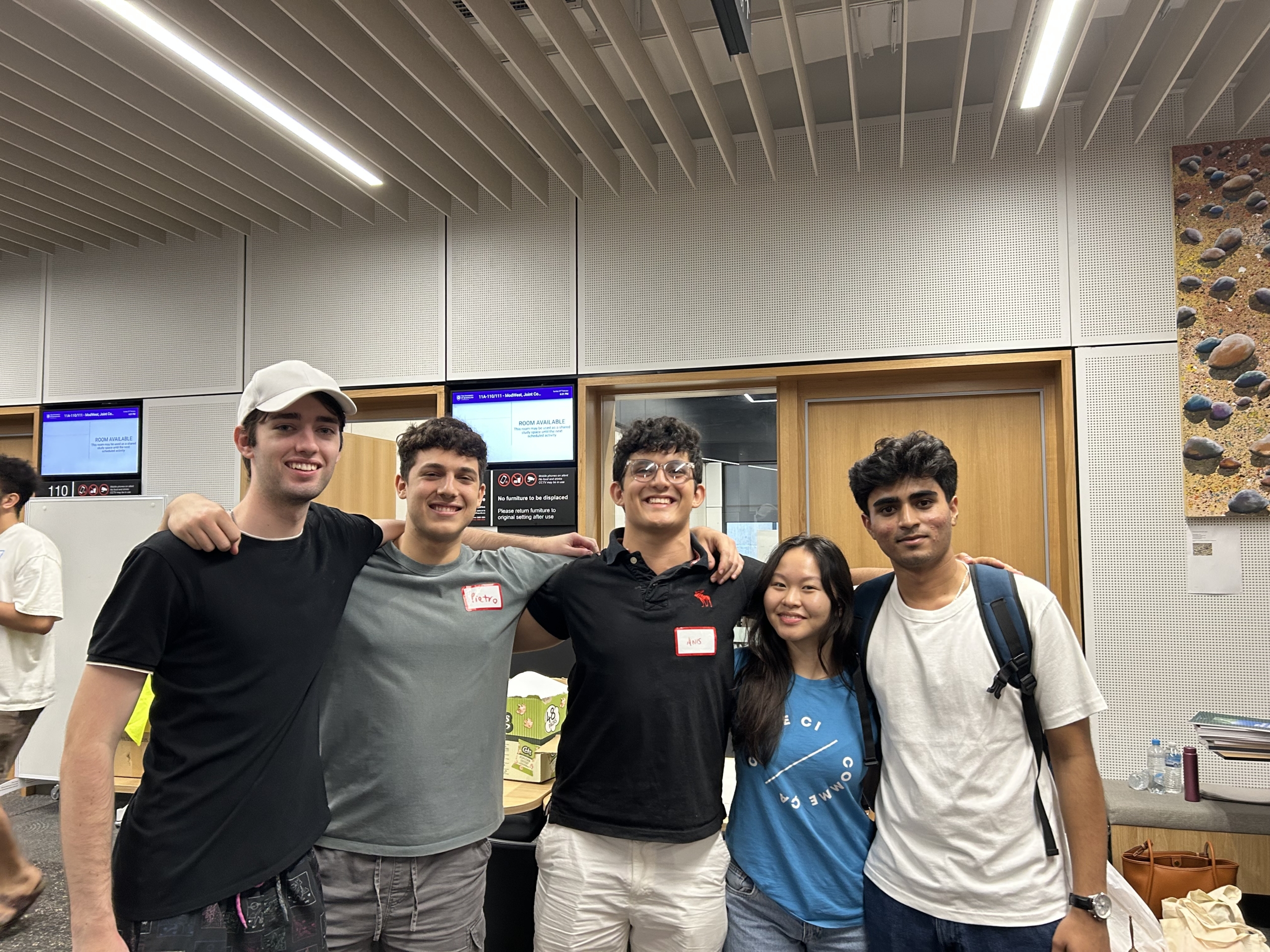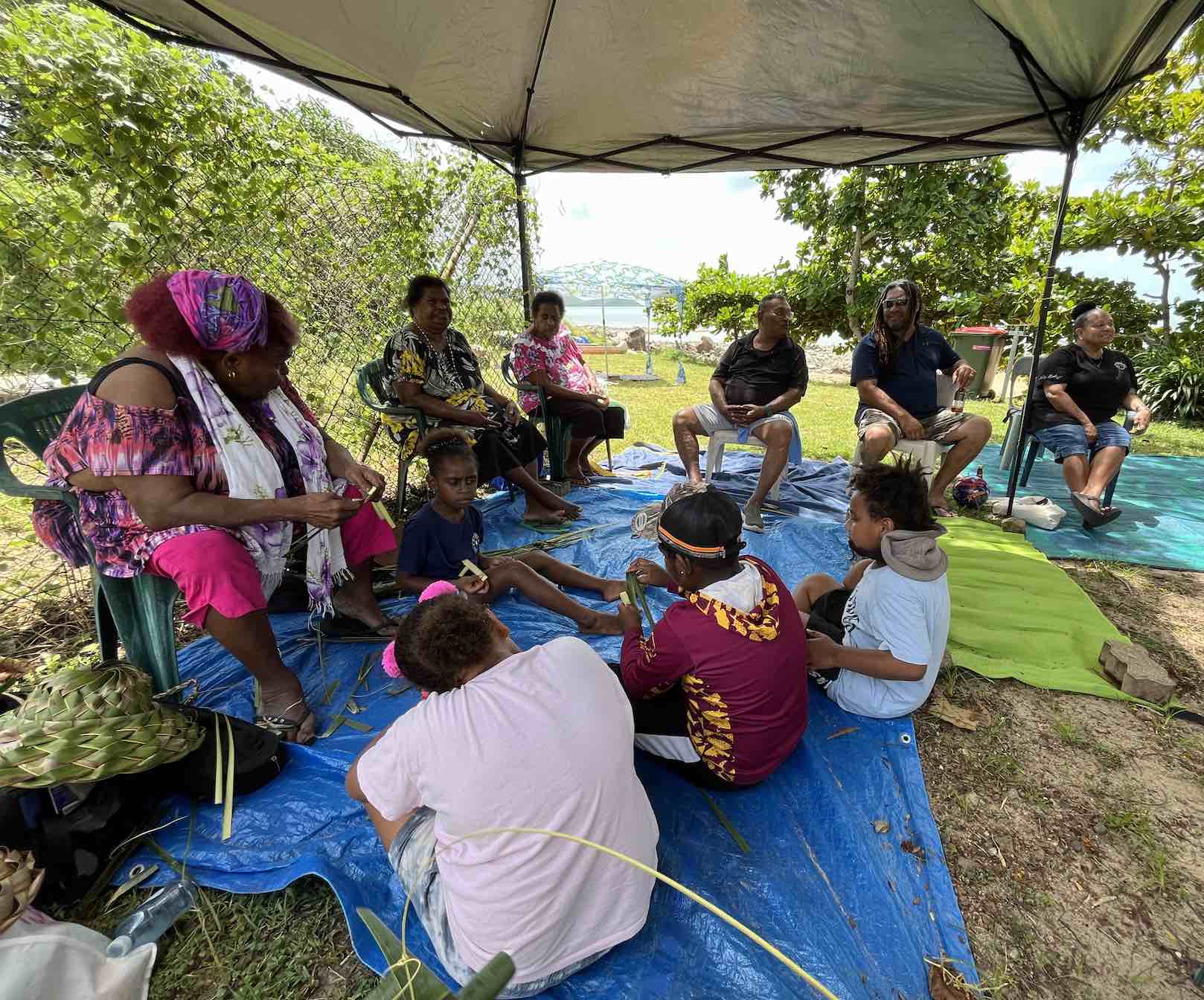‘I saw this Faith’: The story of Margaret Gabey
In this interview for Australian Baha’i Horizons, Dellaram Vreeland speaks to one of the longest-standing Baha’is on Thursday Island, Margaret Gabey, who shares her journey of Faith, and her experience attending her first ever National Baha’i Convention.
Margaret Gabey sings to me when we speak.
someone gave me a book
to read, to learn
what was in that book
was like shining diamonds.
drawing me deeper inside.
It’s a song that, composed by Baha’i man Walter Waia, moved her to declare her Faith as a Baha’i almost 30 years ago. A song chanted at her first fireside – a gathering for individuals interested in learning more about the Baha’i Faith – and which was facilitated by the late Opaka Lysander who was visiting the Torres Strait from the Solomon Islands.
“Every one of us felt the words of that song,” Margaret Gabey, who is affectionately known as Aunty Nay. “That was an answer to my life.”
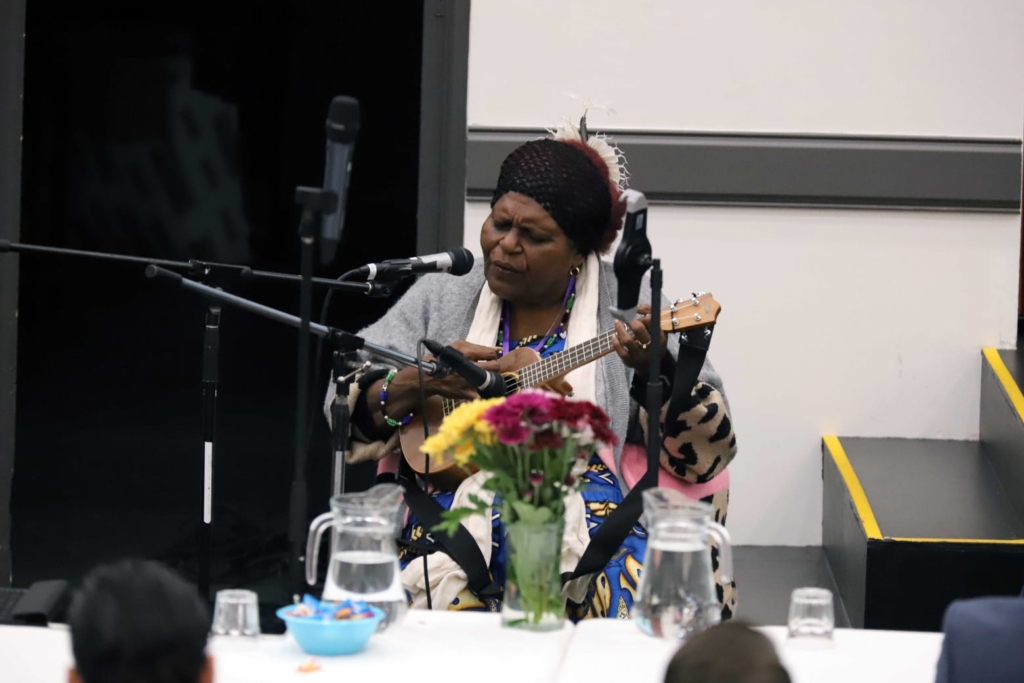
In the lead up to that pivotal moment, Aunty Nay says she recalls reading Baha’u’llah’s Hidden Words in the local newspaper on a weekly basis. “I was reading those Hidden Words and I said, who are these people? These Words were so beautiful! I couldn’t wait to read them the following week.
“It was like an answer to my prayers, and I couldn’t wait. Every time I would buy the local paper I wouldn’t care about the front page. I would always go to the back to see the quote.”
It was through Aunty Nay’s late spiritual sister, Janelle Gebadi, one of the first Baha’is on Thursday Island, that she was invited to the initial fireside. “She was telling our longest pioneering family, Aunty Mona, who is our spiritual Mama, that she had a dream about me. In that dream she was serving me food on a silver platter,” Aunty Nay recalls.
“Aunty Mona told her, invite her to a fireside! I didn’t know what a fireside was, but I said ‘okay’. I had a cake and candles to blow out for the twins and she told me to bring them.”
“Aunty Mona had a shop and at the back of the shop she had the fireside. Mona’s Bazaar. It still exists today – new proprietors but they kept the name.
“[The fireside] was new for me. It was new for us,” Aunty Nay says. “It was so lovely.”
Aunty Nay shares how Lysander connected to her heart at the fireside, speaking to Baha’i spiritual principles from the cultural perspective of the Solomon Islands and the Christian perspective.
“The majority of us are Christians here in Torres Strait, and I knew when he was talking about the scriptures. I had written all the scriptures down and I was sitting and I was really focusing on him. Then my kids started playing up and I said, kids, kids, kids, stop! But I was watching. I couldn’t stop watching him.
“He said don’t worry about the kids. Baha’u’llah will look after them. I didn’t know who Baha’u’llah was. Later I found He was the founder of the Baha’i Faith, the new Messenger of God for this day and age.”
Aunty Nay shares how Lysander’s reflections on the significance of the number nine – which is of numerical import in the Baha’i Faith and also to Indigenous people – had a particular impact on her heart. “When he mentioned the number nine, he came from his background. I didn’t expect it.
“I thought, this is it, this is the end of my line of seeking. I declared in 1996 on the First Day of Ridvan.”
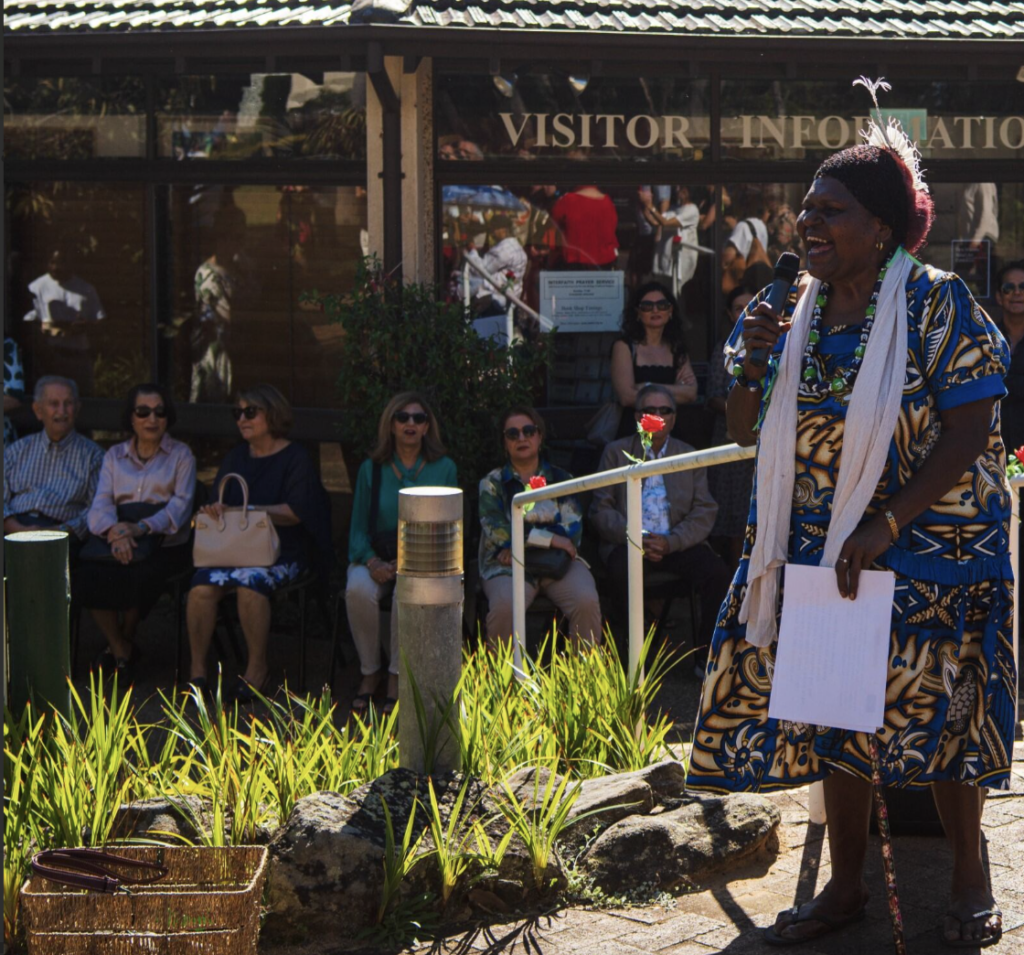
Twenty-nine years later, on the First Day of Ridvan, commemorating the day which Baha’u’llah declared His Mission, Aunty Nay took her place in front of the Baha’i House of Worship in Sydney as a distinguished guest as part of the launch of the Ridvan First Nations exhibition. It was her second time visiting the Temple. A “pilgrimage,” she calls it.
On show at the Baha’i House of Worship information centre until early June, the exhibition features 19 works from First Nations artists including the Baha’i prayer Remover of Difficulties translated in three of the dialects spoken in the Torres Strait Islands – Meriam Mir, Mabuyag Kala Lagau Ya and Yumplatok (Torres Strait Creole).
“In Torres Strait alone there’s two languages and our Creole is our third language. English is our fourth.”
“I’m grateful I grew up with my grandparents because I can speak my language. We weren’t allowed to use it outside of the homes. That’s why we came up with this Creole.”
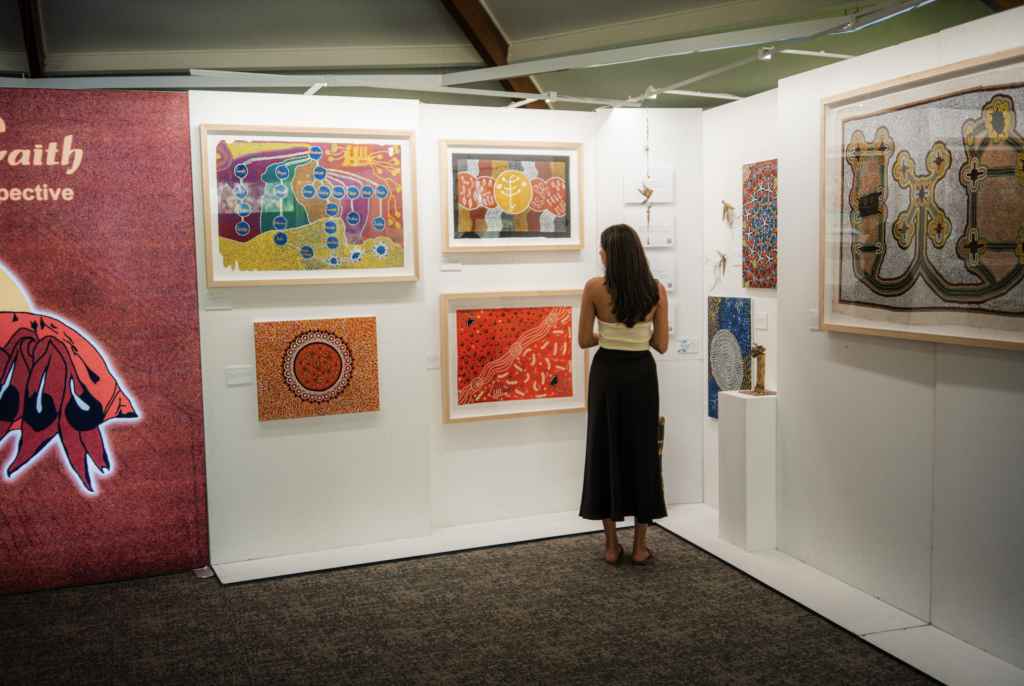
Days after the exhibition, Aunty Nay attended her very first National Baha’i Convention, witnessing the formation of Australia’s national governing body, the National Spiritual Assembly, as well as the process of consultation and reflection undertaken by close to 90 delegates representing communities from across the country. “I was speechless,” she says.
Delivering the acknowledgement to Country, as well as a collective prayer and singing session and closing prayer, Aunty Nay’s presence at the Convention heightened the overall spirit and infused energy and light.
Aunty Nay, who is skilled in the art of weaving coconut fronds, pandanus and cane as well as contemporary materials and who is also a talented ukulele player, says attending the exhibition inspired her to return home and further enhance her own skillset.
“I’m going to go back home [after the Convention] and I’m going to paint,” she says. “When you paint, that’s going to be an answer to a lot of thoughts.”

It was in 1871 that Christian missionaries first arrived in the Torres Strait islands. Torres Strait Islanders celebrate July 1 as ‘The Coming of the Light’, with a yearly holiday and church services.
Aunty Nay was raised as a Christian, and she still sings at the local church, ukulele in-hand. Her spirit, radiance, and knowledge permeate across the Torres Strait, shedding light throughout the region.
She tells me how her family comes from the Geauram and Zagareb tribes in the far eastern island of the Torres Strait. The Zagareb tribe – also known as Gergeramle – are the sunrise people. Aunty Nay says they were “very proud people” because they were the first to see the sunrise from the east.
“I’m glad I come from this tribe because I saw this Faith.”
“Ya Baha’u’l-Abha,” she invokes.
Thanks for reading.
Subscribe
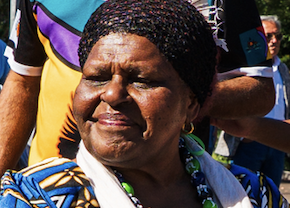
Aunty Nay
Margaret Gabey, affectionately known as Aunty Nay, is one of the oldest-standing Baha’is on Thursday Island in the Torres Strait. Her bloodlines run from Mer to Mabuyag, and her totems include the seagull, shark, snake, dolphin and moth. She is a talented weaver and ukulele player, and her skills see her in high demand all […]
Published in June, 2025, in Individual Initiatives > Interviews
Available online at: horizons.bahai.org.au/individual-initiatives/i-saw-this-faith-the-story-of-margaret-gabey/
Related Stories
‘We said yes’: one Australian couple’s international pioneering experience
For Fariba Heydari and her husband Manuel, the notion of leaving their home country to help strengthen the Baha’i Faith’s community-building endeavours wasn’t seen as an outrageous prospect, but ...
An eastern suburbs community outing to the Baha’i Temple
In this personal reflection, Collis Ta’eed explores the meaning of a vibrant community, and how visits to the Baha’i House of Worship can further enrich that sense of vibrancy and unity. Earlier ...
From simple conversations to spiritual education sessions
In this interview with Australian Baha’i Horizons, Samin Todd reflects about the new spiritual education sessions initiated alongside families from her children’s school community, and how they ...
Confidence placed in young people’s ability to soar: a personal vignette
A youth from the Baha’i community of Brisbane has witnessed firsthand the level of trust and confidence placed in young people to contribute to the betterment of the world following a year of ...
‘You have to start somewhere’: Making connections wherever you are
In this personal reflection, Leonie Oldmeadow shares how her small Baha’i community in the Bass Coast, Victoria, is striving to advance within the framework of the Nine Year Plan albeit the ...
‘No reason to shy away’: A young person’s reflection on inviting friends to community-building activities
In this personal reflection, 18-year-old Anis Mihrshahi shares his story about how he overcame his own fears and inhibitions to invite his friends to the Faith’s community-building ...
